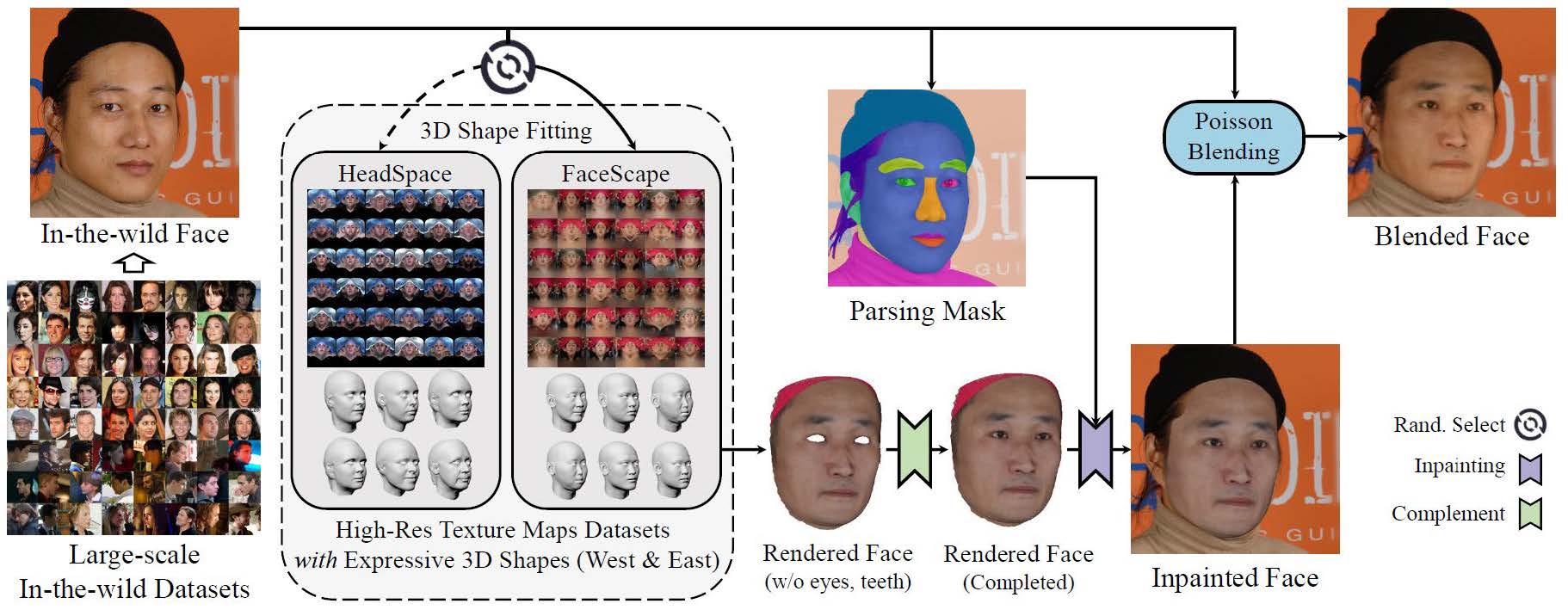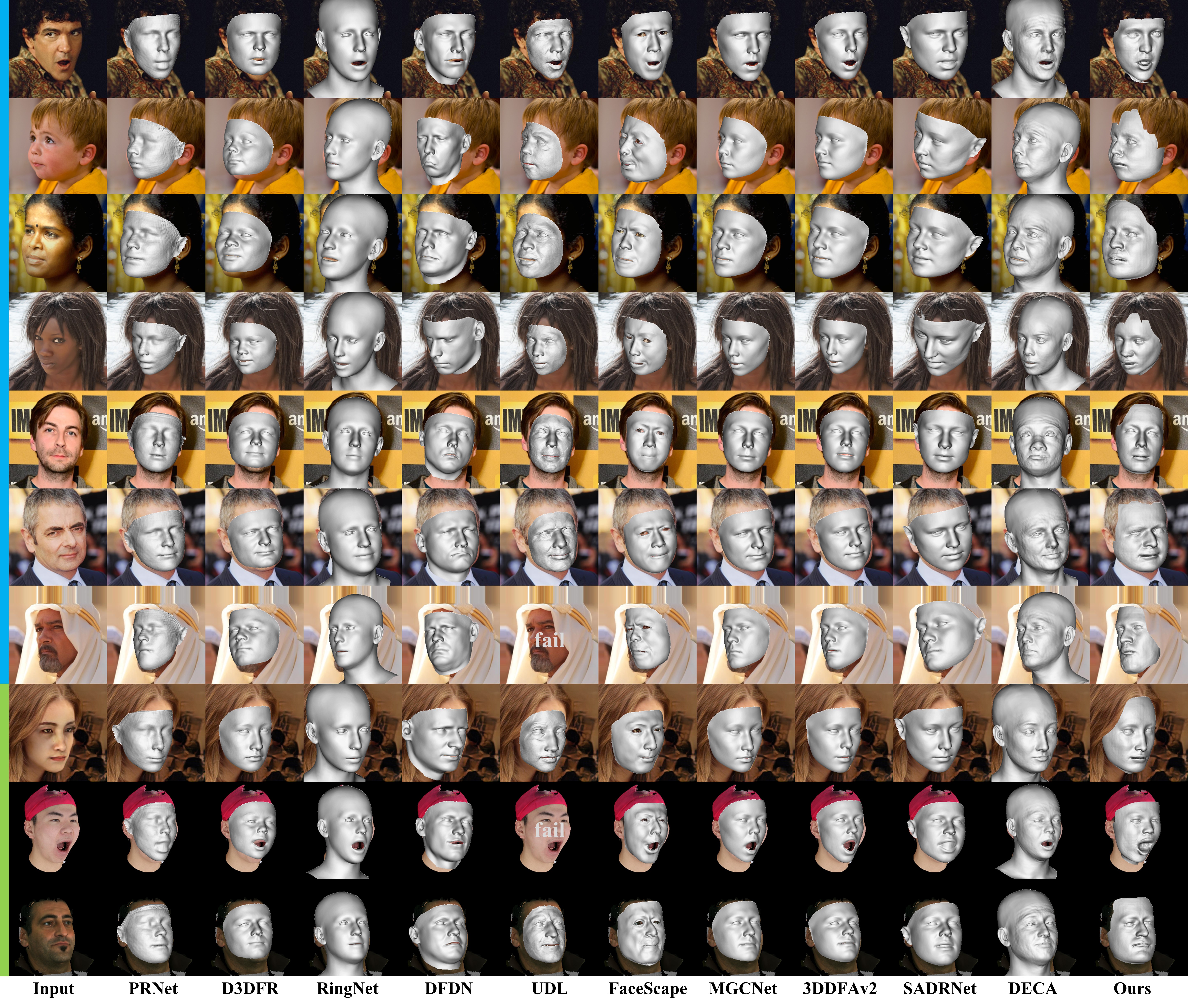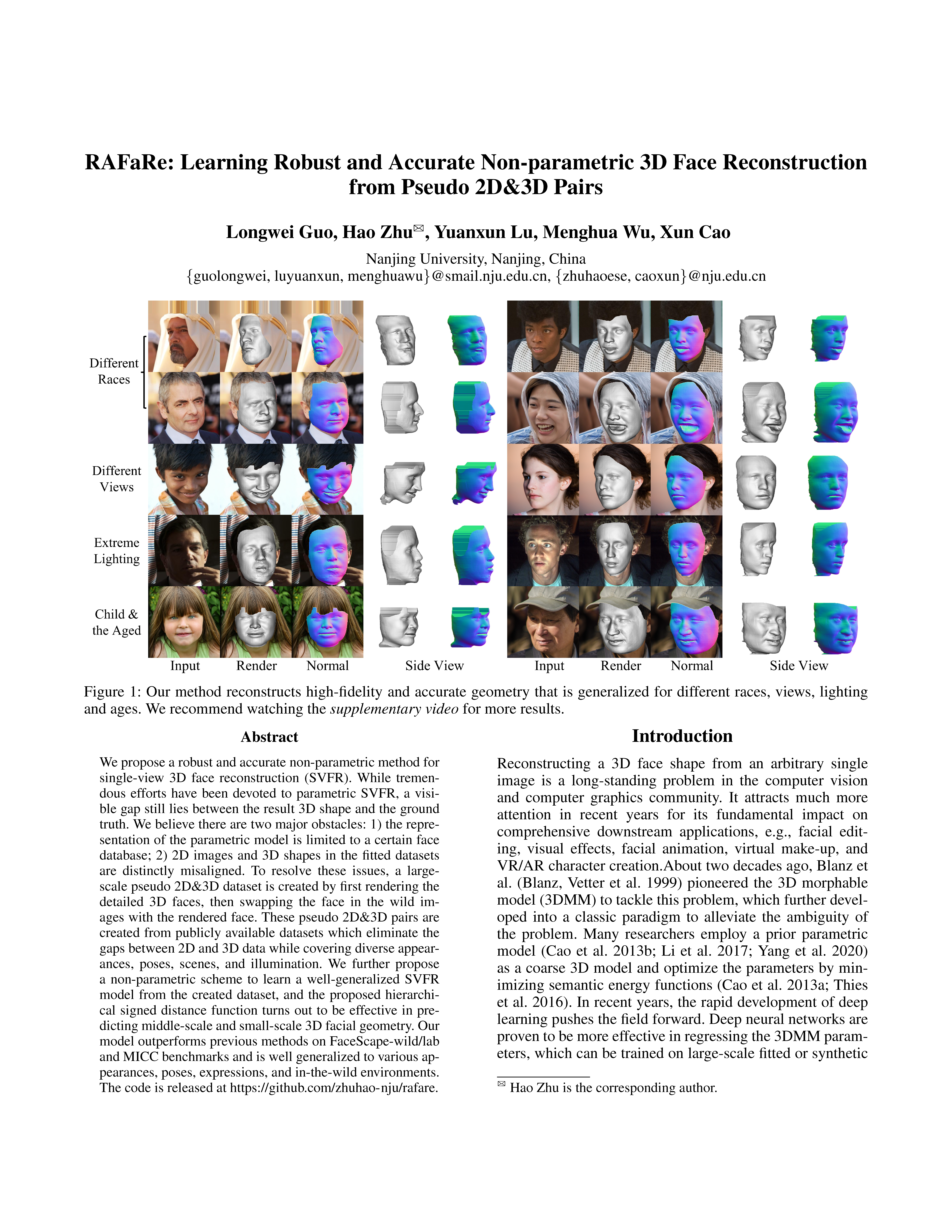|
We propose a robust and accurate non-parametric method for single-view 3D face reconstruction (SVFR). While tremendous efforts have been devoted to parametric SVFR, a visible gap still lies between the result 3D shape and the ground truth. We believe there are two major obstacles: 1) the representation of the parametric model is limited to a certain face database; 2) 2D images and 3D shapes in the fitted datasets are distinctly misaligned. To resolve these issues, a large-scale pseudo 2D\&3D dataset is created by first rendering the detailed 3D faces, then swapping the face in the wild images with the rendered face. These pseudo 2D\&3D pairs are created from publicly available datasets which eliminate the gaps between 2D and 3D data while covering diverse appearances, poses, scenes, and illumination. We further propose a non-parametric scheme to learn a well-generalized SVFR model from the created dataset, and the proposed hierarchical signed distance function turns out to be effective in predicting middle-scale and small-scale 3D facial geometry. Our model outperforms previous methods on FaceScape-wild/lab and MICC benchmarks and is well generalized to various appearances, poses, expressions, and in-the-wild environments.
|





